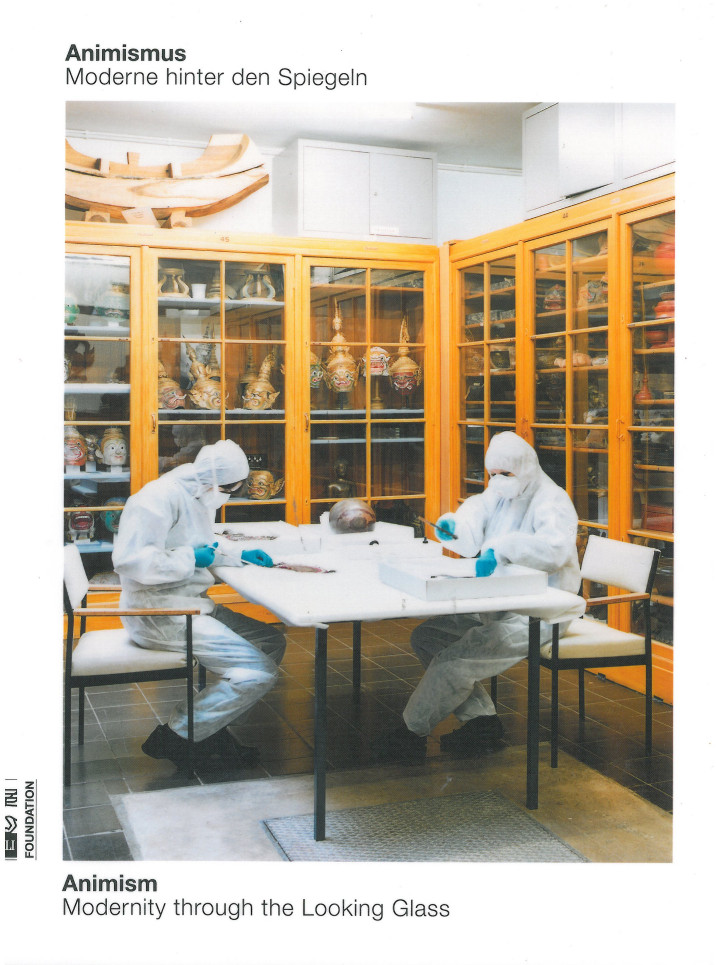The Age of Discrepancies: Art and Visual Culture in Mexico, 1968-1997 (2006) [Spanish/English]
Filed under book, catalogue | Tags: · 1970s, 1980s, 1990s, art, art history, mexico, zapatistas

“This survey of artistic experimentation in late twentieth-century Mexico assesses fields as diverse as painting, photography, poster design, installation, performance, experimental theater, Super-8 film, video, music, poetry and popular culture. It also attempts–in what may be an experimental work itself–to recreate ephemeral works, insofar as possible, with the support of the artists. The three tumultuous decades between 1968 and 1997 saw the end of the PRI (Institutional Revolutionary Party) in a violent final phase that began with the 1968 Tlatelolco massacre–which brutally crushed the student movement of 1968–and ended with the crises that followed the 1994 Zapatista uprising in Chiapas. The Age of Discrepancies is the first visual history to cover this exceptional period, and to propose a genealogy for the work that emerged from it.”
With essays by Olivier Debroise, Tatiana Falcón, Pilar García de Germenos, Vania Macías, Cuauhtémoc Medina, Lourdes Morales, Alejandro Navarrete Cortés, Álvaro Vázquez Mantecón.
La era de la discrepancia: arte y cultura visual en Mexico, 1968-1997
Edited by Olivier Debroise
Publisher Universidad Nacional Autónoma de México & Turner, México D.F., 2006
ISBN 9789703238293
469 pages
via Cármen Rossette Ramírez
Commentary: Cuauhtémoc Medina (c2013).
Comment (0)Anselm Franke, Sabine Folie (eds.): Animismus: Moderne hinter den Spiegeln / Animism: Modernity through the Looking Glass (2011) [DE/EN]
Filed under catalogue | Tags: · animism, art, colonialism, conceptual art, ethnology, modernity, psychoanalysis

“Animism. Modernity through the Looking Glass takes its cue from the ethnological concept of animism that emerged in the nineteenth century in the context of colonialism in search of a “primal” religion. The term was applied to cultures that view nature and objects as having a soul and a life of their own. This concept borrowed from ethnology also plays a key role in psychoanalysis, where it denotes a mental state in which the inner and outer worlds are not distinct from each other.
The catalogue brings together artworks, documents, and artifacts to create an essayistic visual space that points to the need for a decolonialization and revision of this traditional understanding of animism. The show juxtaposes historical materials such as early attempts to animate technologically reproduced images with contemporary works addressing the line between life and non-life.”
With essays by Sabine Folie, Anselm Franke, Isabelle Stengers, and conversation with Elisabeth von Samsonow by Angela Melitopoulos and Maurizio Lazzarato.
Publisher Generali Foundation, Vienna, and Buchhandlung Walther König, Cologne, 2011
ISBN 9783863350703
229 pages
via cblip
PDF (35 MB)
Comment (0)NSK from Kapital to Capital: Neue Slowenische Kunst: An Event of the Final Decade of Yugoslavia (2015) [English, Slovenian]
Filed under catalogue | Tags: · appropriation, art, art history, capitalism, politics, retro-avant-garde, theory, utopia, yugoslavia

“The exhibition NSK from Kapital to Capital was the first major museum project of the Neue Slowenische Kunst (NSK) collective, and followed the events of its individual constitutive groups, from 1980 and the Laibach poster scandal in Trbovlje (Slovenia) through 1992, when the art collective transformed into the NSK State in Time. The title, NSK from Kapital to Capital, places the exhibition in the socio-political context of the turbulent 1980s, when the old world order was crumbling and the all-encompassing system of global capitalism was starting to come into its own.”
Publisher Moderna Galerija, Ljubljana, 2015
ISBN 9789612061142
83 pages
via L’Internationale
From Kapital to Capital (English, 2015, 2 MB, PDF)
Od Kapitala do kapitala (Slovenian, 2015, PDF, added on 2017-11-7)

